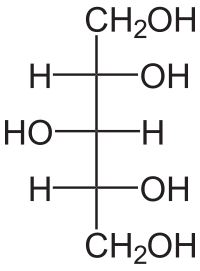
Photo from wikipedia
We investigated the anticaries properties of an adhesive containing dimethylaminododecyl methacrylate (DMADDM) in vivo via a secondary caries animal model. Cavities were prepared in the maxillary first molars of Wistar… Click to show full abstract
We investigated the anticaries properties of an adhesive containing dimethylaminododecyl methacrylate (DMADDM) in vivo via a secondary caries animal model. Cavities were prepared in the maxillary first molars of Wistar rats. DMADDM-containing adhesives were applied on one side and commercial adhesives on the opposite side as a control. After a 3-week feeding period to induce secondary caries, the molars were harvested for the evaluation of the secondary caries. Lesion depth (LD) and mineral loss (ML) were measured via a micro-CT method, and a modified Keyes scoring method yielded scores for the caries lesions. Statistical analysis was divided into 2 parts: a correlation analysis between 2 evaluations with one-way ANOVA and a least-significant differences (LSD) test, and an evaluation of anticaries adhesives with a paired samples t test. The results showed that: (1) secondary caries was successfully produced in rats; (2) there was a correlation between the modified Keyes scoring method and micro-CT in the evaluation of the secondary caries; (3) the adhesive containing DMADDM significantly reduced both LD and ML (according to micro-CT), and also lowered the scores (based on the modified Keyes scoring method). This suggests that the novel DMADDM adhesive could perform an anticaries function in vivo via the secondary caries animal model which was also developed and testified in research. Secondary caries is one of the major reasons leading to the failure of caries restoration treatment. As a solution, anticaries adhesives perform well in biofilm inhibition in vitro. However, the lack of secondary caries animal models limits the evaluation of anticaries adhesives in vivo.
Journal Title: Caries Research
Year Published: 2017
Link to full text (if available)
Share on Social Media: Sign Up to like & get
recommendations!